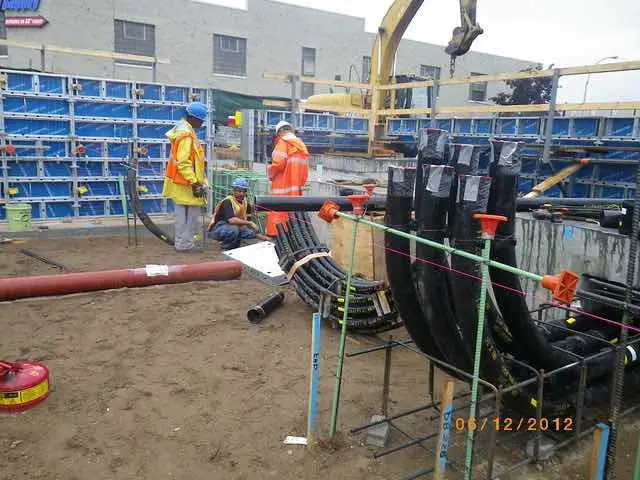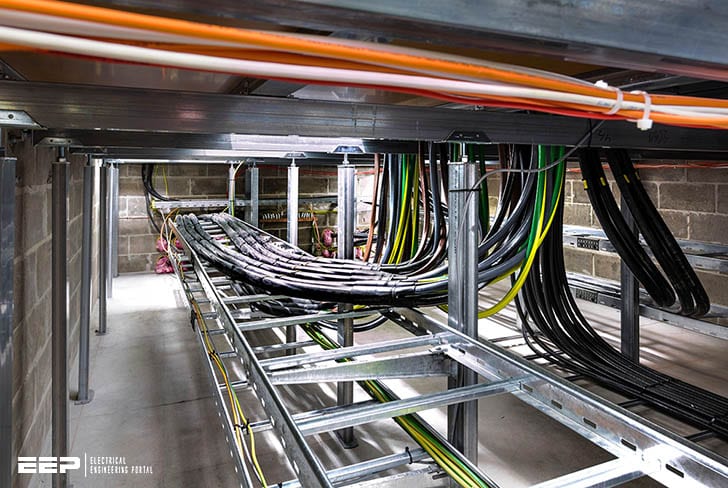A substation is a facility where electricity is generated, transformed, or distributed. A substation cable is an insulated conductor that is used to connect the various components of a substation. The most common type of substation cable is made of copper or aluminum.
There are many different types of substation cable that are used in electrical power systems. The most common type of substation cable is high voltage AC (HVAC) cable. HVAC cable is used to connect the primary winding of a transformer to the secondary winding of another transformer or to connect the secondary winding of a transformer to an earth electrode.
Other types of substation cable include medium voltage AC (MVAC) cable, low voltage AC (LVAC) cable, and direct current (DC) cable.
Types of Cables Used in Substation
There are many types of cables used in substations, each with their own purpose. The most common type of cable is the high voltage (HV) cable, which carries the electricity from the power plant to the substation. Other types of cables include low voltage (LV) cables, which distribute electricity within the substation, and control cables, which carry signals between different parts of the substation.
Substation Cable Sizing
Cable sizing is one of the most important aspects of substation design. Properly sized cables are essential to ensuring that the substation can safely and efficiently operate.
There are a few different factors that must be considered when determining the proper size for a cable.
The first is the amperage rating of the circuit breaker that will be used in the substation. This rating will determine the amount of current that can flow through the cable without causing damage.
The second factor to consider is the voltage rating of the equipment in the substation.
The voltages present in a substation can be very high, and it is important to make sure that the cables can handle these voltages without failing.
The third factor is thermal capacity. Cables must be able to dissipate heat generated by currents flowing through them without overheating and becoming damaged.
The amount of heat generated by a cable depends on its resistance, which is affected by both its material composition and its cross-sectional area.
Once all of these factors have been considered, it is possible to select a cable with an amperage, voltage, and thermal capacity rating that meets or exceeds the requirements of the substation equipment.
Overhead Cable
An overhead cable is a type of power line that is used to transmit electricity between two points. The cable is supported by poles or towers and typically has three conductor wires, which are insulated from each other. Overhead cables are used in a variety of applications, including transmission lines for electric utilities, railways, and tramways.
Kva Cable
KVA cable is an acronym for kilovolt-ampere cable. It is a type of high voltage electrical cable used to transmit power from one point to another. KVA cables are typically made of copper or aluminum and have a cross sectional area that is much larger than that of standard electrical cables.
The insulation on kva cables is also much thicker in order to withstand the higher voltages involved. KVA cables are used in a variety of applications such as transmission lines, power plants, and substations.
Wire And Cable
Wire and cable are two important electrical products that are used in a variety of applications. Wire is an electrical conductor that is typically made from copper or aluminum. Cable is an electrical conductor that is composed of two or more wires that are twisted together.
Both wire and cable can be used for a variety of purposes, including transmitting electricity, data, and signals.
There are several differences between wire and cable. One difference is that wire is typically smaller in diameter than cable.
Another difference is that wire is typically not as flexible as cable. Wire can be either solid or stranded, while cable is always stranded. Solid wire is typically used for low-voltage applications, such as wiring for homes and businesses.
Stranded wire is more flexible and can be used for higher-voltage applications, such as transmission lines. Cable also has a jacketing that protects the inner wires from damage.
Wire and cable are both available in a variety of sizes, materials, and ratings.
The size of the conductor (the inner metal core) will determine the amount of current it can carry safely. The material of the conductor will determine its resistance to corrosion and heat damage. The rating will determine the maximum voltage and temperature it can safely handle before breaking down or failing electrically.
Pvc Control Cable
PVC control cable is an extremely versatile type of electric wire that can be used for a variety of purposes. It is most commonly used in industrial and commercial applications, as it is able to withstand high temperatures and harsh conditions. PVC control cable is also resistant to oil, chemicals, abrasion, and UV radiation.
This makes it an ideal choice for use in exposed or outdoor areas.
4160 Wire
4160 Wire is a high quality, multi-strand copper wire that is used in a variety of applications. It is often used in electrical wiring applications because it has a very low resistance and can handle high current loads. 4160 Wire is also used in data communications applications because it can support high speeds and has low crosstalk characteristics.

Credit: peguru.com
Which Type of Cable is Used in Substation?
The type of cable used in a substation depends on the application and the voltage level. The most common types are high-voltage underground cables and medium-voltage overhead cables.
High-voltage underground cables are typically used for transmission lines, while medium-voltage overhead cables are used for distribution lines.
The main difference between the two is the voltage level they can operate at. High-voltage underground cables can operate at voltages up to 345 kV, while medium-voltage overhead cables have a maximum voltage of 46 kV.
Another difference between high-voltage underground cables and medium-voltage overhead cables is the insulation material.
High-voltage underground cables use oil or paper as an insulator, while medium-voltage overhead cables use air or silicone rubber.
The type of cable used in a substation also depends on the climate conditions. For example, in cold climates, it is necessary to use special insulated cables that can withstand freezing temperatures.
What is Control Cable in Substation?
A control cable is a type of electrical cable that is used to carry signals between two pieces of equipment in a substation. Control cables are typically used to connect PLCs, RTUs, and other devices that need to communicate with each other.
Control cables usually have a twisted pair or shielded pair configuration in order to minimize interference from outside sources.
The most common type of control cable is known as RS-485, which is specifically designed for use in industrial applications.
When choosing a control cable for your substation, it is important to consider the operating environment and the type of equipment that will be connected. For example, if you are connecting sensitive electronic equipment, you may need a shielded control cable to protect against electromagnetic interference (EMI).
In general, control cables are low voltage cables; however, there are some types that can carry up to 600 volts. It is also important to note that control cables must be installed according to code in order to ensure safety.
CABLE LAYING 220KV 1000Sq. mm#cable #cabletermination #substation #highvoltage
Conclusion
If you’re in the process of building a substation, one of the most important decisions you’ll make is what type of cable to use. There are a variety of factors to consider, including cost, conductivity, and installation difficulty. In this blog post, we’ll break down the different types of substation cables and help you choose the right one for your project.
The three most common types of substation cables are copper, aluminum, and fiber optic. Each has its own advantages and disadvantages. Copper is the most expensive option but it’s also the most conductive.
Aluminum is less expensive but not as conductive as copper. Fiber optic cable is the least expensive but it doesn’t have good conductivity properties.
When choosing a substation cable, you need to balance cost with performance.
If you’re on a tight budget, aluminum may be the best option. If you need the highest possible level of performance, copper is your best bet. And if you’re looking for a balance between cost and performance, fiber optic cable may be the right choice for you.



